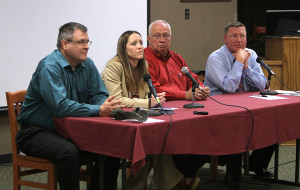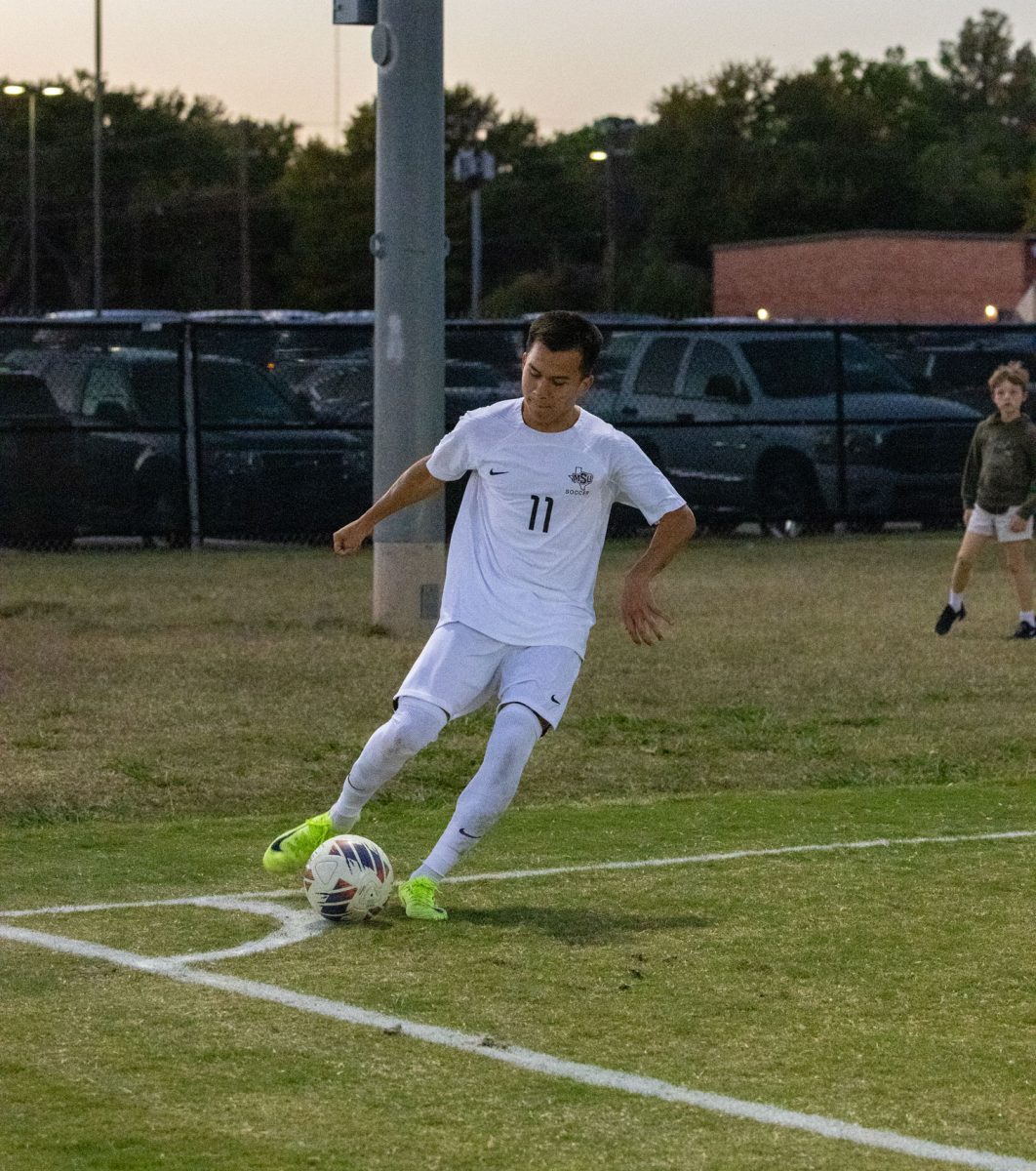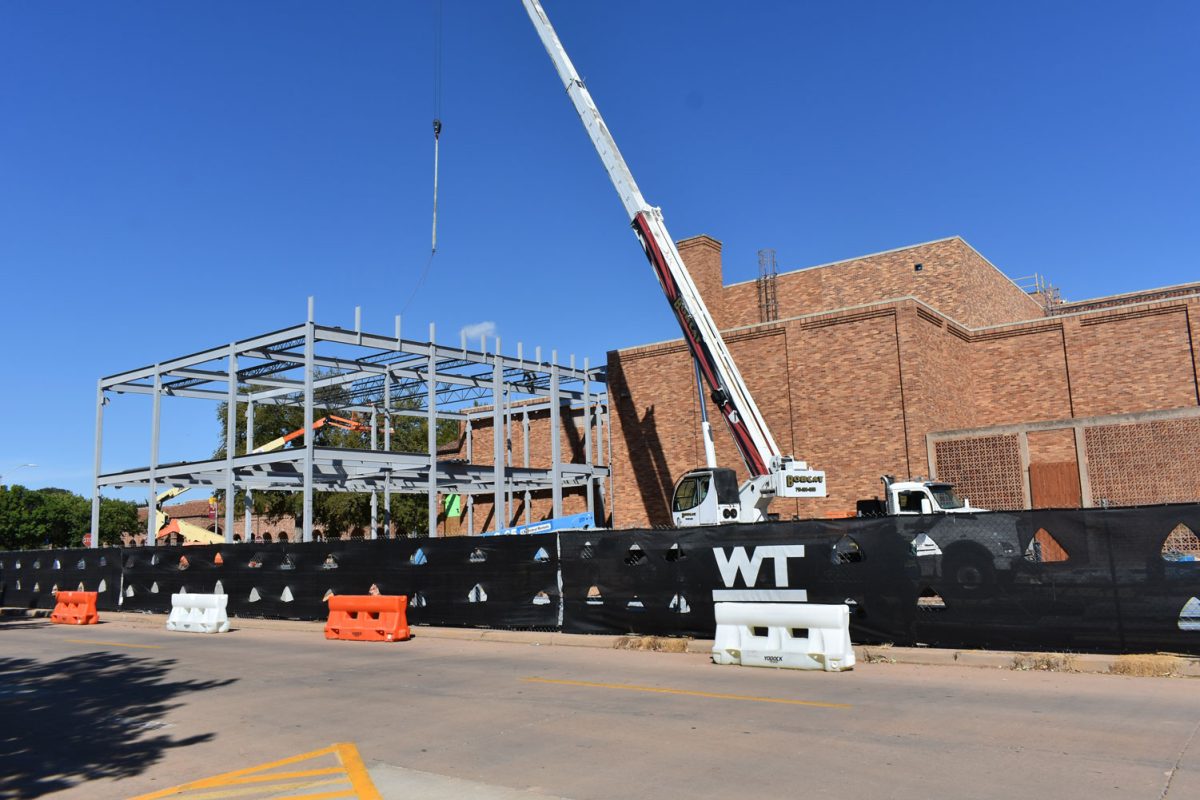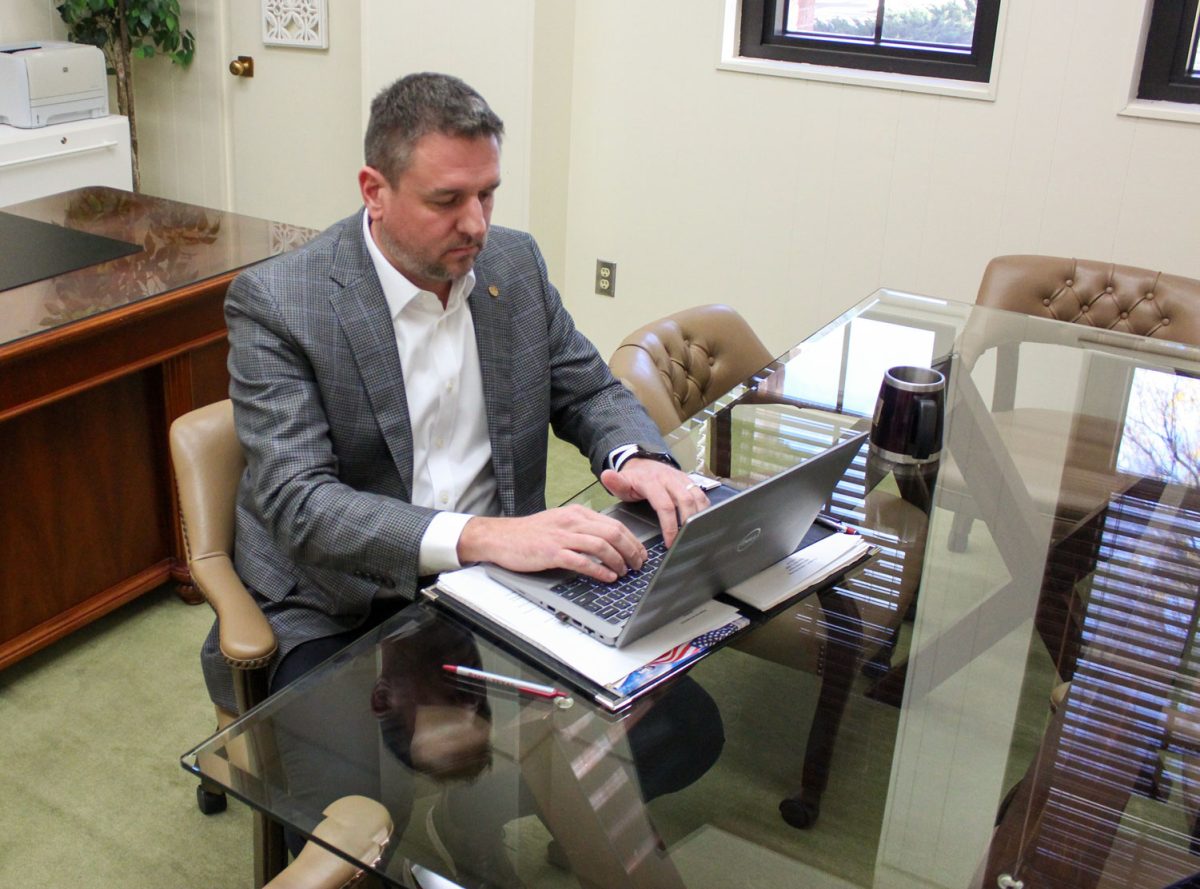
In an attempt to inform the public on cloud seeding, NewsChannel 6 hosted an informational panel in Shawnee Theatre On April 5. Daniel Nix, city operations manager, and Teresa Rose, deputy director of public works, were joined by Gary Walker, project director of Seeding Operations and Atmospheric Research, to comprise the panel.
The city has a contract capped at $300,000 with SOAR, allowing them to seed potential rain clouds, “With a stoppage between July and August just because we see that typically those aren’t seedable months so we don’t want to pay the minimum,” Rose said.
The contract will resume in September and expire at the end of October, which is “our last good rainfall month” according to Nix.
“At the end of that October we’ll look at the program and see how well we did and we’ll make the decision if we want to continue forward in 2015 with it,” Nix said.
The contract can also be cut short if the area experiences enough natural rainfall to make cloud seeding unnecessary.
“If we were lucky enough to get that big rain and fill up a couple of reservoirs, we’d be glad to go home. We did our contract with the city where it’s just a monthly charge for us to be ready, and then when we go fly the gas and the flares are at cost,” Walker said. “We buy the gas from the city to begin with, and the flares we just bill them for the invoice price. Obviously it costs something to have everything ready to go, but there’s no extra money if we don’t.”
Q: What’s the primary motive for the ongoing programs?
Generally those programs are agricultural related. My program where I live, we pump groundwater not only for our municipal supply, but agriculture is the biggest use of groundwater. In India, in 2012, we worked for a mining company. In Istanbul when we worked that big project over there, that was a big municipal water supply. It’s either going to be municipal supply, agriculture or industry.
Q: A couple of weeks ago we saw just about two inches of rain in a very short amount of time, you guys had seeded that. Did you measure that on your radar and look at volume and everything else and see the result?
We did not. It’s very time consuming to just go in and do that one evaluation so we usually wait until the end of the year until we do that. Can we take credit for that? We can generally get about 10-15 percent more water out of a suitable cloud to seed than a suitable cloud that we didn’t seed. Hopefully we contributed some to that rain, for sure, but we did not do an evaluation where we measured the clouds.
Q: There’s bound to be some questions about the silver iodide content because there always is people who are concerned about the silver.
There are some snow programs in California that have been going for 50-plus years. When the weather comes in from the west.
Q: Does this make it rain, or just make it rain more than it did naturally?
Precipitation enhancement. We can’t make it rain. We can get more water out of a suitable cloud that’s seeded than a suitable cloud that’s not. We will never say that we can make it rain because we’ve got to have the clouds and there’s got to be water in those clouds to make the seeding to work.
Q: When you’re seeding a cloud, is that for rain right now or does it have a benefit for rain down the road as well?
Like the analysis shows, the clouds can last longer. Area-wise they’ll get bigger and they’ll last longer, so that’s important because you can’t think of a cloud that’s going to rain as a pitcher, and once you pour it out, that’s all. It’s not just a pitcher. But there’s a lot of factors involved, it depends.
Q: Is the target always over the watershed?
Yes, that’s where we’re trying to put the water, but we got to lead that duck or that dove. The storm motion has something to do with it.
Nix: When we submitted our permit late last year, we have to identify the target area which are the watersheds, and then we have to identify an operational area, so we may seed in Baylor county to make it rain in Archer county so we have to identify Baylor as an operational county.


















